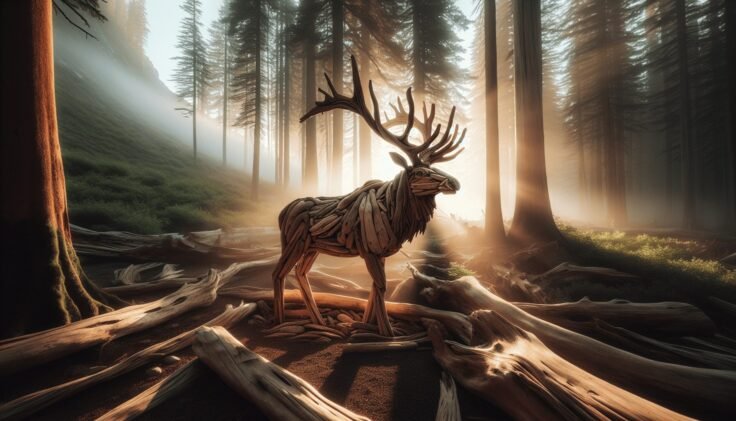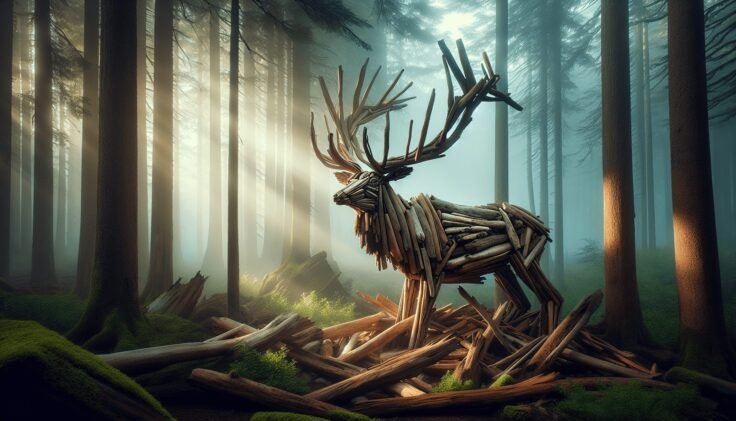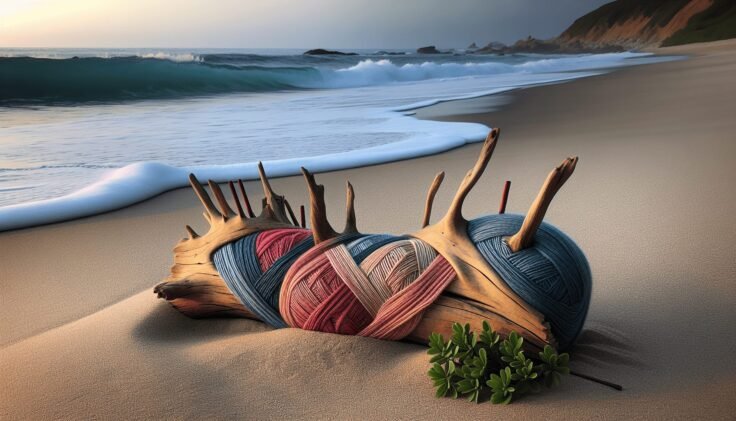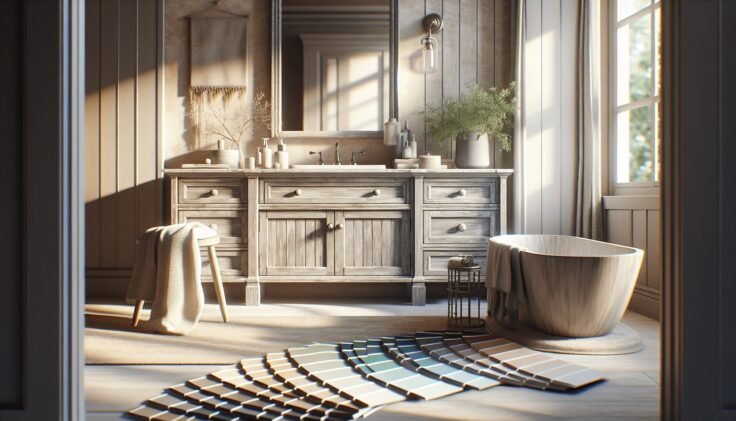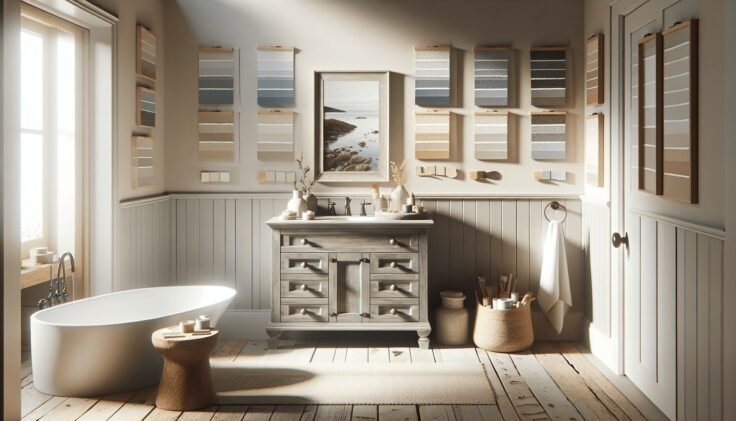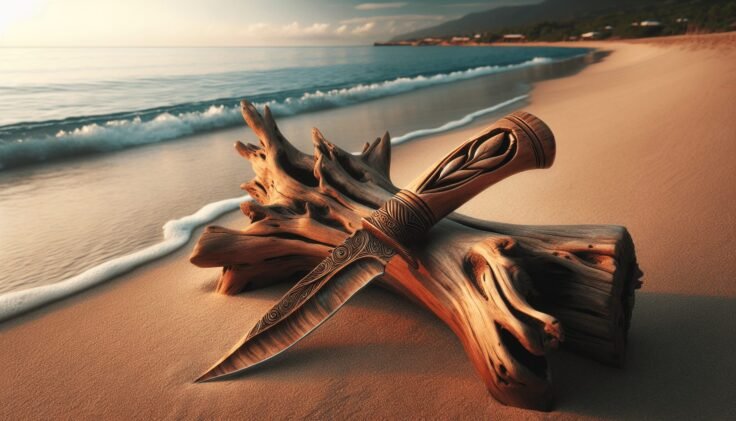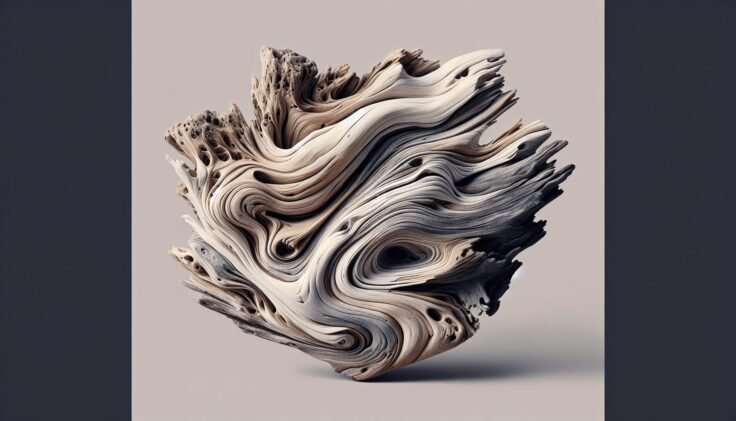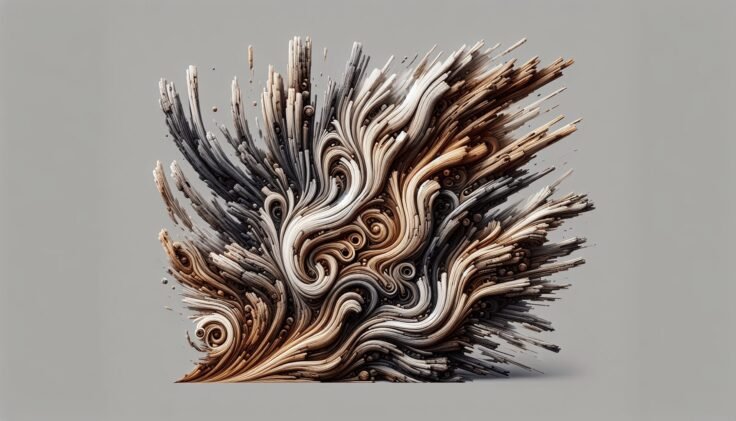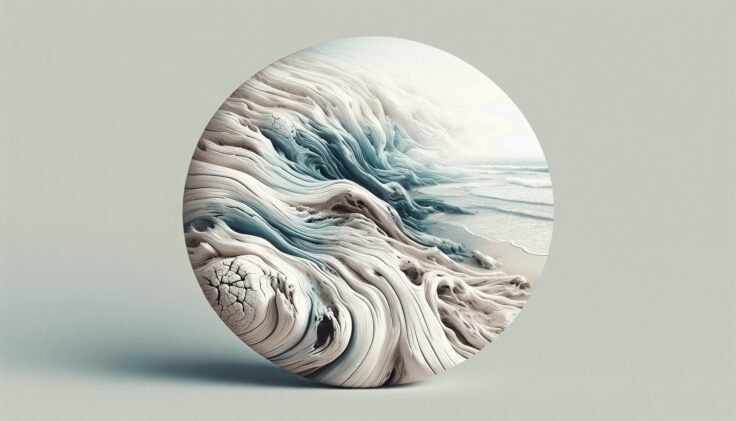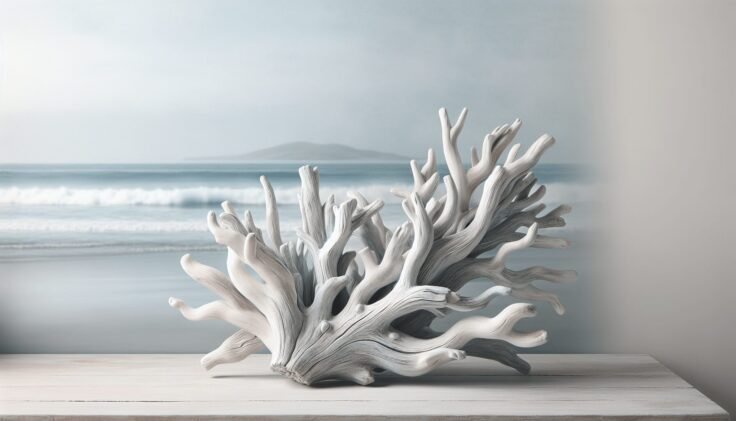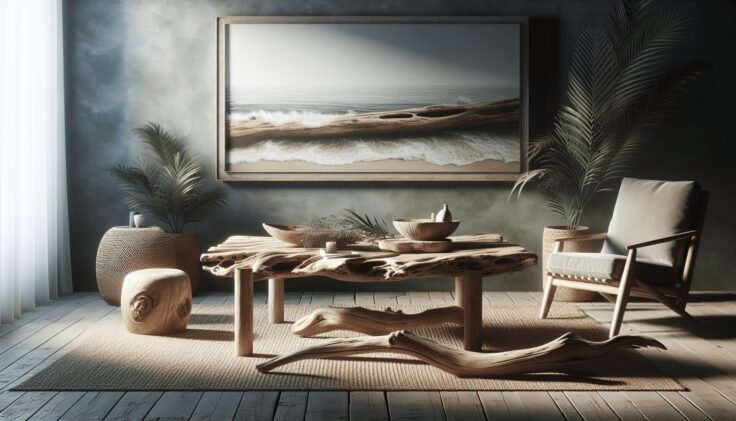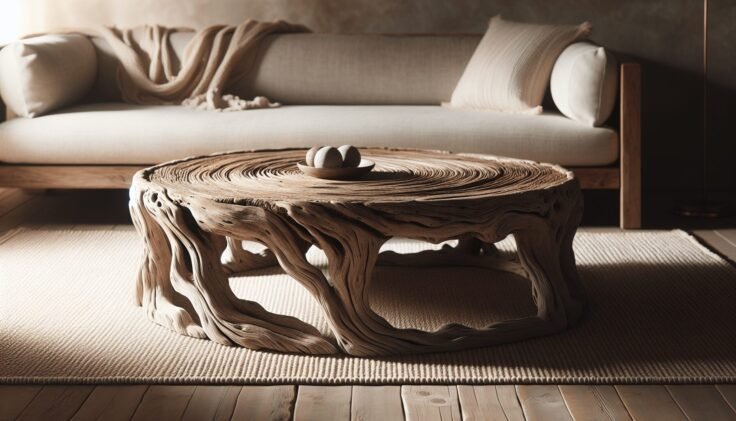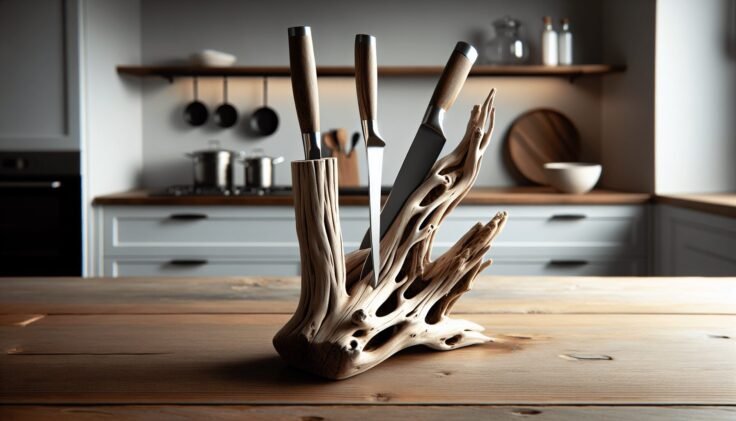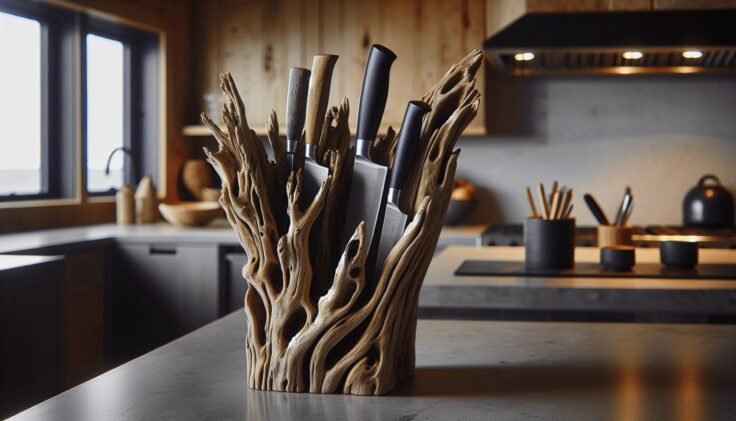Have you ever wondered what stories driftwood pieces could tell if they could speak? The graceful curves and intricate textures of driftwood are testament to the relentless power of nature, continuously shaping and refining raw materials into unique works of art. One such intriguing creation is the driftwood elephant head. Picture this: an art piece that combines the natural beauty of driftwood with the majestic form of an elephant, offering an aesthetic blend of natural wonders and artistic expression.

What is a Driftwood Elephant Head?
A driftwood elephant head is a sculptural art piece crafted from driftwood to resemble the head of an elephant. These sculptures are not just interesting artistic pieces but are also a testament to the creativity of artisans who see beyond the basic form of wood and envision a majestic creature.
The Beauty and Significance of Driftwood
Driftwood is more than just wood washed ashore. It’s a natural element that embodies the journey of wood carried by rivers or oceans, sculpted by water, sun, and sand. This natural element carries a rustic charm and has become a favorite medium for artists and nature enthusiasts alike.
Driftwood Attributes:
| Attribute | Description |
|---|---|
| Texture | Smooth yet uneven surfaces, shaped by natural forces |
| Color | Varied hues, often bleached by salt and sun |
| Density | Generally lightweight, making it easy to work with |
| Unique Shape | Irregular shapes due to environmental processes |
Driftwood’s inherent beauty comes from its weathered appearance and unique forms. Each piece has a story—a testament to years spent wandering and being refined by nature.
The Majesty of Elephants in Art
Elephants are often associated with wisdom, strength, and longevity. Their grandeur and cultural significance make them a popular subject in various art forms. An elephant’s head, in particular, signifies power and intelligence, making it a sought-after representation in sculptures and paintings.
Cultural Significance:
| Culture | Elephant Symbolism |
|---|---|
| Indian | Wisdom, royalty, and connection to the divine |
| African | Community, memory, and protection |
| Western | Strength and exotic beauty |
Elephants are revered across various cultures, and their presence in art brings layers of meaning and connection to the natural world.
Creating a Driftwood Elephant Head: The Artistry Involved
Transforming pieces of driftwood into an elephant head sculpture requires skill, patience, and a deep appreciation for both the medium and the subject. The process is as much about discovery as it is about creation.
The Process of Creation
The journey of crafting a driftwood elephant head begins with selecting the right pieces of driftwood. Artisans often spend hours collecting driftwood from beaches, selecting pieces with intriguing textures and shapes suitable for the intended sculpture.
- Selection: Choose driftwood with natural curves that can mimic the contours of an elephant’s head and features.
- Planning: Visualizing how various pieces can fit together is crucial. The creator must see the potential elephant in the disparate pieces.
- Assembly: Artists may join pieces using glue, nails, or dowels. Each piece must fit seamlessly to achieve a natural and cohesive look.
- Detailing: Once the general shape is formed, finer details like eyes, tusks, and ears are meticulously added, often requiring smaller, uniquely shaped pieces of wood.
- Finishing Touches: The final sculpture may be treated with oils or sealants to protect the wood and enhance its natural colors and textures.
Tools and Techniques
Creating a driftwood elephant head involves various tools and techniques, combining traditional carpentry methods with innovative artistic approaches.
- Tools Needed:
- Saw: For cutting and shaping pieces to fit.
- Sandpaper: To smooth rough edges and surfaces.
- Drill: For making holes to join pieces together securely.
- Wood glue and nails: Essential for assembling the sculpture.
The techniques vary depending on the desired style or robustness of the piece, but the common goal is to preserve the wood’s natural look while achieving the aesthetic vision.
Benefits and Challenges of Driftwood Art
While the aesthetic and symbolic value of driftwood art is undeniable, this art form also presents a unique set of benefits and challenges.
Benefits
- Sustainability: Driftwood is a natural material, making it an eco-friendly choice. Using it helps clean and manage debris along shorelines.
- Uniqueness: Each piece of driftwood is unique, ensuring that no two sculptures are alike. This offers artists and collectors a one-of-a-kind creation each time.
- Connection to Nature: Driftwood art brings a piece of nature into homes, fostering a connection with the natural world.
- Therapeutic Process: Creating with natural materials can be meditative and stress-relieving, providing emotional and mental wellness benefits to creators.
Challenges
- Material Variability: The inconsistency in wood quality and sizes can make matching pieces difficult.
- Fragility: Driftwood can be more brittle than conventional wood, necessitating careful handling and construction.
- Weather Influence: Exposure to varying environmental conditions can impact driftwood’s texture and color over time.
- Skill Requirement: Crafting detailed sculptures requires significant woodworking skills and artistic vision.
Incorporating Driftwood Elephant Heads in Your Space
Once completed, a driftwood elephant head can become a stunning focal point in your home or office. It combines the raw appeal of nature with artistic representation, offering a sophisticated yet rustic aesthetic.
Interior Design Ideas
- Living Room: Place the sculpture above a fireplace or on a prominent wall to draw attention and complement neutral tones and earthy textures.
- Office Space: Use it to inspire creativity and as a symbol of strength and perseverance in the workplace.
- Entryway: Position it in the entrance to create a grand and welcoming statement.
Maintenance Tips
Maintaining driftwood art involves some care to preserve its beauty:
- Keep the sculpture out of direct sunlight to prevent fading.
- Dust regularly to maintain the clarity of intricate details.
- Apply wood oil periodically to maintain the driftwood’s natural luster and prevent drying.
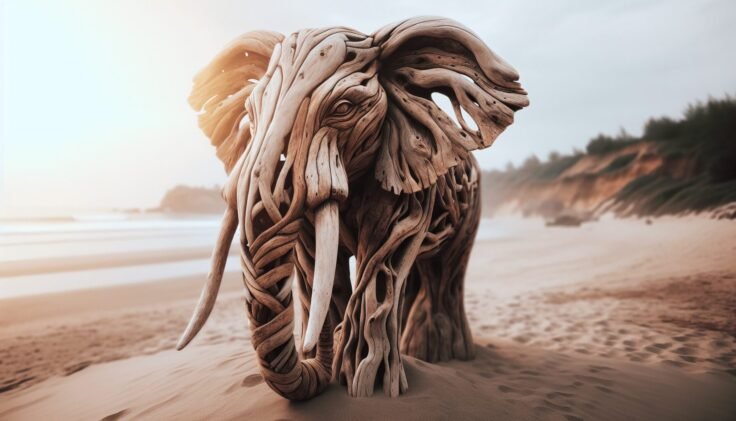
The Artistic Value and Market of Driftwood Elephant Heads
The market for driftwood art, particularly driftwood elephant heads, is significant due to their unique appeal and symbolic power. These sculptures often find eager buyers among art collectors and those passionate about eco-friendly and sustainable art forms.
Understanding Market Trends
The rise in environmental awareness and the appreciation for sustainable art has increased the demand for driftwood sculpture. Driftwood elephant heads, being both symbolic and aesthetically compelling, hold considerable market value:
- Collectors’ Interest: Collectors are drawn to the unique beauty and organic nature, making them willing to invest in high-quality driftwood sculptures.
- Art Festivals and Exhibitions: These venues provide artists with platforms to showcase their work, enhancing visibility and appeal.
- Online Marketplaces: The internet has expanded the reach for driftwood art, with numerous platforms dedicated to handcrafted items now listing these unique sculptures.
The appeal of these artworks is not confined to a particular region but rather spans globally, especially among communities keen on sustainable living and natural aesthetics.
Tips for Aspiring Driftwood Artists
If you’re inspired to start creating your own driftwood sculptures, here are some tips to guide you:
Starting Out
- Research and Learn: Begin by studying different driftwood sculptures to understand the techniques and styles. Online tutorials and woodworking guides can be valuable resources.
- Collect Mindfully: Gather driftwood responsibly, ensuring you’re adhering to local regulations to protect natural areas.
- Experiment: Start small, perhaps with simple projects, and gradually attempt more complex sculptures as your skills evolve.
- Connecting with Communities: Joining forums and art communities can provide support, feedback, and inspiration.
Developing Your Style
- Personal Touch: Let your personality shine through your artwork by incorporating elements that resonate with you.
- Trial and Error: Don’t be afraid to make mistakes; each piece is a learning opportunity.
- Feedback: Accept and seek out feedback from peers or seasoned artists to enhance your technique.
Final Thoughts
Creating a driftwood elephant head is more than merely crafting a sculpture; it’s about celebrating the beauty of natural materials while paying homage to one of nature’s most revered creatures. Whether you’re an artist, collector, or someone looking to adorn your space with a piece of natural history, the driftwood elephant head embodies a blend of ecology, artistry, and cultural symbolism. By respecting nature’s resources and recognizing the significance behind this artistry, you not only get a masterpiece but contribute to a larger narrative that values sustainability and creativity.
